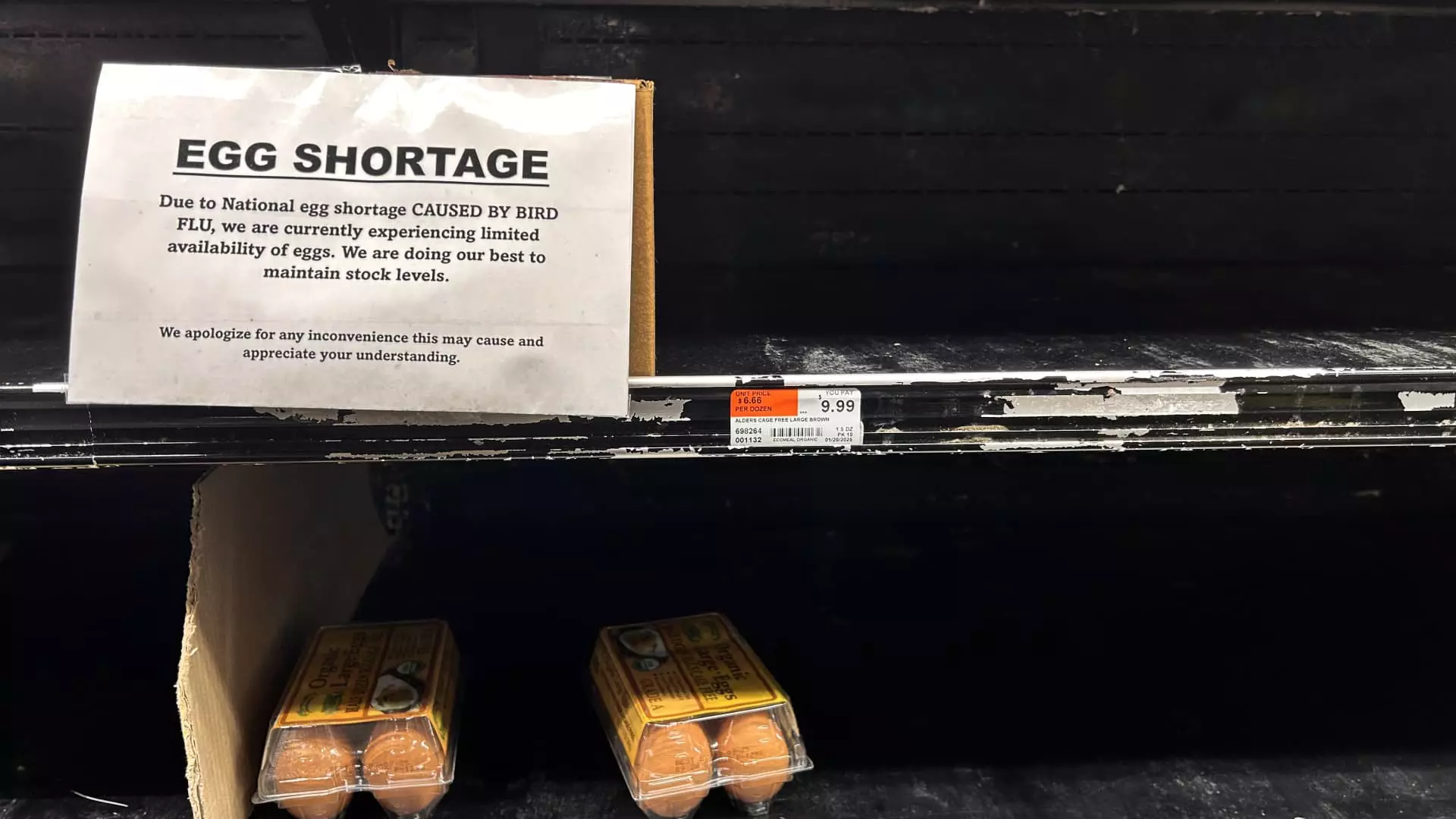The fluctuation of egg prices in recent months has raised eyebrows as wholesale rates reach unprecedented heights, driven largely by a relentless bird flu outbreak. This scenario not only threatens the egg supply but also places a heavy financial burden on consumers and businesses alike. Various retailers are feeling the pinch, and analysts warn that these costs are likely to translate into further consumer price increases at grocery stores across the United States.
Recent data indicates that average wholesale prices for large white shell eggs have soared to roughly $8 per dozen, a staggering increase from the previous record of $5.46 per dozen set in late December 2022. According to Ryan Hojnowski, a market reporter from Expana, this dramatic surge in prices reflects the severe challenges faced by the egg market. It is essential to note that a delay of a few weeks often exists between wholesale price hikes and their eventual reflection in retail stores. This disconnect varies among retailers, making it crucial for consumers to remain vigilant as they navigate grocery store aisles laden with rising prices.
Inflation, which has generally begun to ease across many sectors, paints a contrasting picture when it comes to egg prices. Consumers are expressing heightened anxiety as they face sticker shock at the checkout line. Notably, retailers such as Trader Joe’s and Costco have begun limiting consumer purchases due to the skyrocketing prices. This move is indicative of a broader trend across the industry; many restaurants, including the popular Waffle House chain, are adjusting their pricing strategies by charging additional fees for egg dishes. Reports from local establishments that have opted to raise prices on egg-related meals further underscore the widespread impact of this crisis.
The implications of these price hikes extend beyond the grocery store as families brace for increased expenses. According to the U.S. Bureau of Labor Statistics, the average retail price of a dozen large Grade A eggs was approximately $4.15 in December—up a staggering 65% from about $2.51 in the same period the previous year. While these numbers fall short of the all-time retail high of $4.82 per dozen noted in January 2023, they signify an ongoing trend of inflation that shows little sign of abating.
Experts highlight that the driving force behind the current egg inflation crisis is “highly pathogenic avian influenza,” commonly known as bird flu. This highly contagious disease poses grave threats to chicken populations, leading to the culling of tens of millions of egg-laying chickens in an attempt to curb its spread. In 2024 alone, it has been reported that over 40 million egg-laying chickens have perished, amounting to approximately 13% of the national total.
These drastic measures undertaken to eliminate infected flocks result in a substantial decline in egg supplies. Recent data shows that inventories of shell eggs are now roughly 15% to 16% below the five-year average, indicating a significant supply shock. The timing of this drop could not be worse, coinciding with peak seasonal demand periods such as the winter holidays when egg-based baking recipes abound.
Retailers bear the burden of these rising wholesale costs at different paces. Larger retailers, including Walmart and Aldi, often possess more financial flexibility to absorb increases in wholesale prices. Factors such as better margins on other food products and the capacity to engage in fixed-price contracts for some supplies allow them to mitigate the impact of soaring egg prices to a certain extent. On the contrary, smaller, independent grocery stores—lacking these operational advantages—are forced to adjust prices more quickly to maintain profitability. This disparity only serves to deepen the challenges faced by consumers, particularly in local communities where options are limited.
As we move further into 2025, the repercussions of bird flu continue to loom large on the horizon. The disease has inflicted significant losses on egg-laying chickens, with over 22 million affected thus far. In contrast, broiler chickens, typically raised for meat, have mostly escaped the worst of this latest outbreak, providing a clearer understanding of the persistent supply challenges in the egg market.
Over the past five years, retail prices of eggs have climbed nearly 170%, compared to much lower increases for chicken meat. The unprecedented rise in egg prices starkly contrasts with the broader inflation trajectory, reinforcing the notion that this is not merely a general economic issue but is specifically tied to the agricultural impacts of avian influenza. With all signs pointing to ongoing instability in the supply chain, both consumers and retailers need to prepare for more challenges ahead in the egg market, making this situation one that merits close attention.

